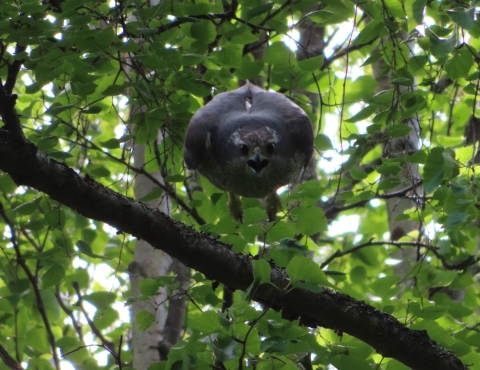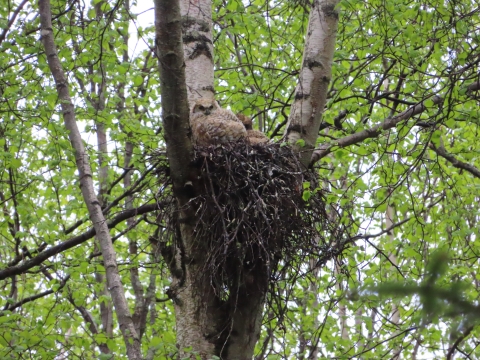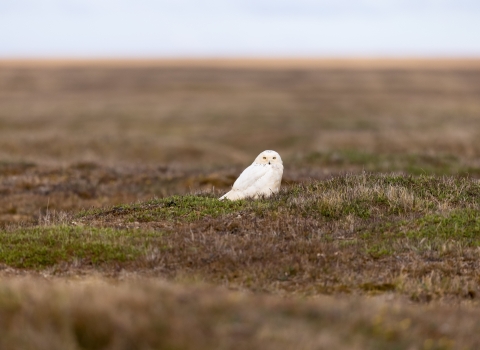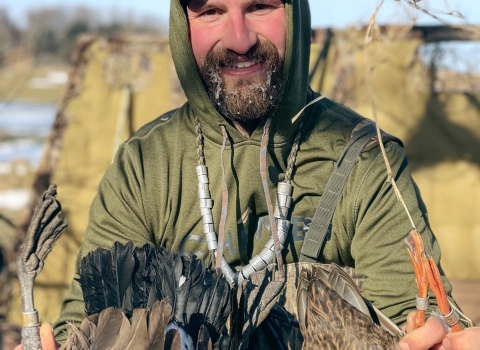Trudging through thick boreal forests full of devil’s club and cranberry bushes with hundreds of mosquitoes buzzing around our heads was how my field partner Kela and I spent almost every day in the summer of 2024. All with the goal to search for a unique hawk and their nests. Our team was tasked by Joint Base Elmendorf-Richardson (JBER) to learn how American Goshawks are utilizing the landscape, something that hadn’t been investigated since 2014.
American Goshawks are a striking medium sized raptor in the Accipitridae family. Adults are dark blueish grey with barred white bellies, a bold white eyebrow, and striking red eyes. Goshawks sleep, breed, and hunt in dense forests, seldom seen outside their arboreous kingdoms; save for the occasional sighting near a waterbody where a lucky hawk might score a nice duck dinner or above a backyard chicken coop looking for an easy meal. Searching for such an enigmatic species presents its own unique challenges; there’s a reason this handsome hawk is called by some the “Gray Ghost”.
With limited information on their movement and habits on base, surveying for goshawks felt like searching for a needle in a very large Alaska shaped haystack. Goshawks have been thoroughly studied in some parts of their range but there hasn’t been much research in Interior Alaska. Such a knowledge gap could contain the missing pieces that makeup the elusive natural history of the goshawk.
However, there is one helpful feature of theirs that came in handy during our breeding season surveys: they are VERY territorial. We unsuspecting technicians often fell victim to their aerial attacks…their blaring “kak kak kak!” calls sounded through the sky, and before we knew it the goshawk was upon us. Flashes of steel grey blurred overhead before the bird perched above us, giving us the stink eye. As we often found when goshawks are this aggressive, it is usually because they have a nest nearby. Throughout our surveys, Kela and I discovered two goshawk nests on base, which each successfully reared multiple chicks that fledged in late July.
Goshawks create large nests right under the canopy, big enough for up to 4 chicks! Over time, they may build multiple nests throughout their territory. Large nests wedged in trees certainly makes for an easy search image while trying to identify an area used by a goshawk, but that doesn’t always mean there is one! Kela and I were fortunate to stumble upon a Great Horned Owl family who had become temporary tenants of an old goshawk nest. Perhaps not coincidentally, the original builders were nowhere in sight. Such an unique observation is an example of how different species interact and how dynamics can shift overtime.
Our surveys in 2024 offered a preliminary look into the life of the goshawks that call JBER home. This and future work will help uncover pieces of the puzzle, furthering our understanding of the mysterious life of one of North America’s most elusive and charming birds of prey. With a summer season under our belt, we’re better equipped for whatever next season may bring…goshawks, great horned owls, and all!








